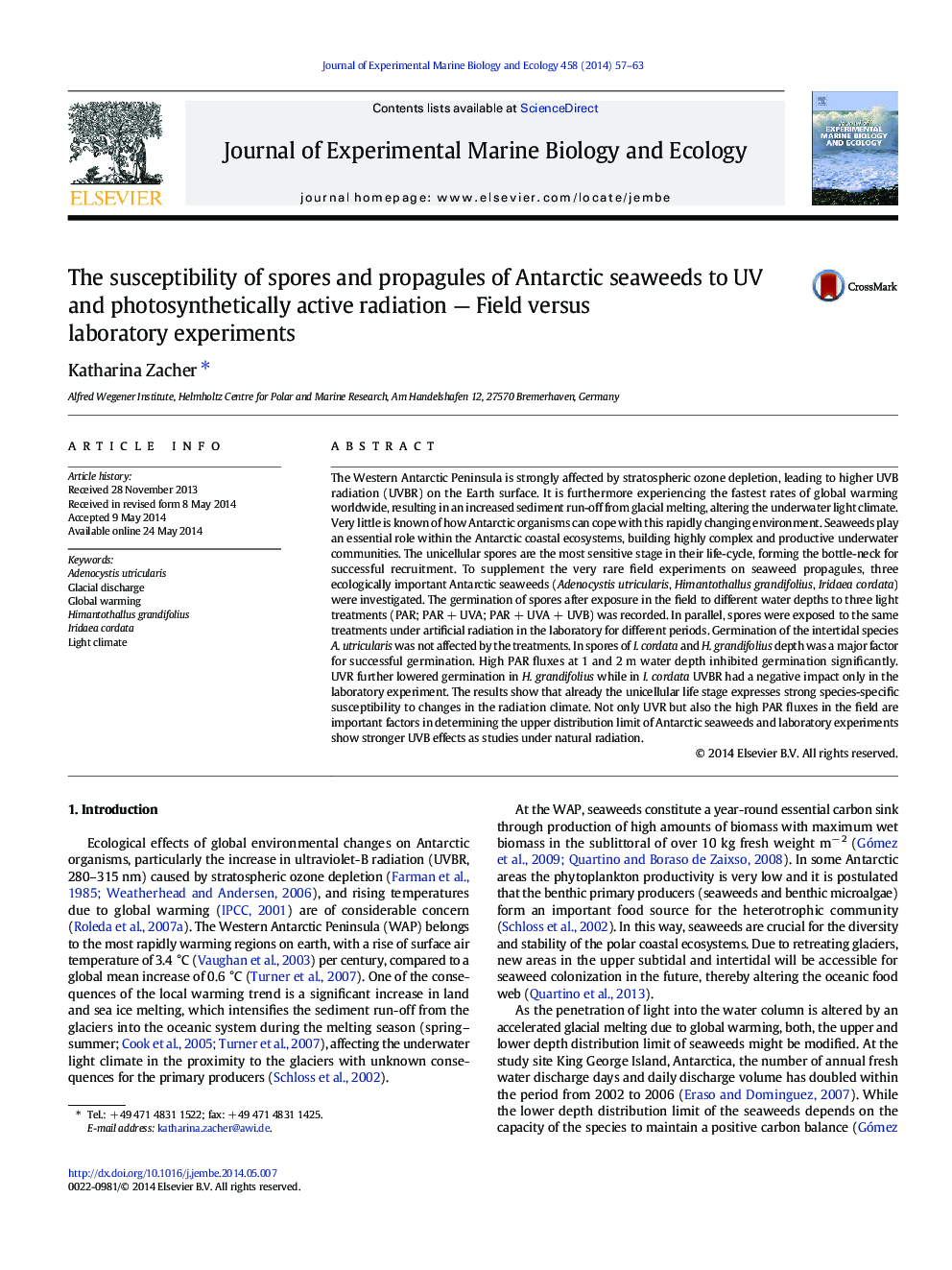| کد مقاله | کد نشریه | سال انتشار | مقاله انگلیسی | نسخه تمام متن |
|---|---|---|---|---|
| 4395533 | 1618417 | 2014 | 7 صفحه PDF | دانلود رایگان |
• High PAR is the main factor in determining the upper distribution limit of the algae.
• Increasing sediment loads may lead to an upward shift of algae at the shore.
• Lab experiments result in an overestimation of UVB effects compared to the field.
The Western Antarctic Peninsula is strongly affected by stratospheric ozone depletion, leading to higher UVB radiation (UVBR) on the Earth surface. It is furthermore experiencing the fastest rates of global warming worldwide, resulting in an increased sediment run-off from glacial melting, altering the underwater light climate. Very little is known of how Antarctic organisms can cope with this rapidly changing environment. Seaweeds play an essential role within the Antarctic coastal ecosystems, building highly complex and productive underwater communities. The unicellular spores are the most sensitive stage in their life-cycle, forming the bottle-neck for successful recruitment. To supplement the very rare field experiments on seaweed propagules, three ecologically important Antarctic seaweeds (Adenocystis utricularis, Himantothallus grandifolius, Iridaea cordata) were investigated. The germination of spores after exposure in the field to different water depths to three light treatments (PAR; PAR + UVA; PAR + UVA + UVB) was recorded. In parallel, spores were exposed to the same treatments under artificial radiation in the laboratory for different periods. Germination of the intertidal species A. utricularis was not affected by the treatments. In spores of I. cordata and H. grandifolius depth was a major factor for successful germination. High PAR fluxes at 1 and 2 m water depth inhibited germination significantly. UVR further lowered germination in H. grandifolius while in I. cordata UVBR had a negative impact only in the laboratory experiment. The results show that already the unicellular life stage expresses strong species-specific susceptibility to changes in the radiation climate. Not only UVR but also the high PAR fluxes in the field are important factors in determining the upper distribution limit of Antarctic seaweeds and laboratory experiments show stronger UVB effects as studies under natural radiation.
Journal: Journal of Experimental Marine Biology and Ecology - Volume 458, September 2014, Pages 57–63
